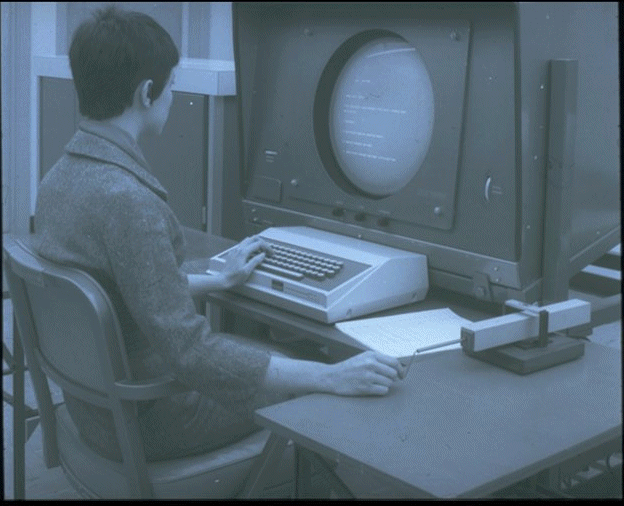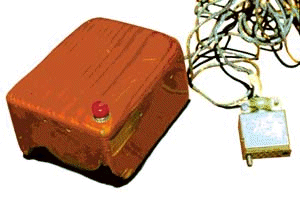The World of Computers
Doug Englebart

Back in the early 1960’s, AFOSR awarded a contract to Dr. Doug Englebart at the Stanford Research Institute. “I got some money from a small Air Force Office for Scientific Research, and there was enough there along with SRI’s (Stanford Research Institute) contribution I could work full time for a couple of years and produce what I called Augmenting Human Intellect: A Conceptual Framework,” said Englebart in a May, 1994 interview.
That resulting work, published in 1962, serves as a sort of roadmap for developing computer technologies. Engelbart believed that the complexity of problems facing mankind was growing faster than the ability to solve them.
“We envisioned problem-solvers using computer-aided working stations to augment their efforts. They required the ability to interact with information displays using some sort of device to move (a cursor) around the screen,” said Dr. Englebart in published interviews.
In his report, Engelbart gives some clues as to where computing would develop.
He suggested the development of an auxiliary device, a gadget “that is held like a pencil and, instead of a point, has a special sensing mechanism that you can pass over a line of the special printing from your writing machine (or one like it). The signals which this reading stylus sends through the flexible connecting wire to the writing machine are used to determine which characters are being sensed and thus to cause the automatic typing of a duplicate string of characters. An information-storage mechanism in the writing machine permits you to sweep the reading stylus over the characters much faster than the writer can type; the writer will catch up with you when you stop to think about what word or string of words should be duplicated next, or while you reposition the straightedge guide along which you run the stylus.
Today, that gadget is known as a mouse.
“A bonus feature,” as Engelbart describes it, would be a common working structure so that individuals, as part of a team, can work on the same project simultaneously. “The whole team can join forces at a moment’s notice to ‘pull together’ on some stubborn little problem, or to make a group decision.”
He called it inter-communication via computer, today it is called networking.
Englebart’s report, with AFOSR support, is filled with concepts that have materialized and fueled the Information Age.
More information on Engelbart’s work, Augmenting Human Intellect: A Conceptual Framework, as well as his current initiatives can be accessed at: www.bootstrap.org This report was first published in the AFOSR Research Highlights web pages.

Experimental pointing device: late 1963 or early 1964; Engelbart in search of best way to select screen objects for interactive display work- stations, launched an experimental study, managed by Bill English They selected a variety of available pointing devices — light pen, track ball, joysticks, the “Graficon” pictured here, and the mouse — and compared their speed and accuracy within computer-driven testing situations. The Mouse won. Other experimental variations were later built and tested, including foot-pedal operated, knee-operated, even head- operated (“nose pointing”).
Douglas C. Engelbart, director of the Bootstrap Institute, Fremont, Calif., will receive the IEEE John von Neumann Medal, sponsored by IBM Corp. He is being recognized “for creating the foundations of real-time, interactive, personal computing including CRT displays, windows, the mouse, hypermedia linking and conferencing, and online journals.”
A list of just a few of Dr. Doug Englebart’s contributions:
- The mouse and pointer cursor
- Display editing
- Outline processing
- Multiple remote online users of a networked processor
- “Linking” and in-file object addressing
- Multiple windows
- Hypermedia
- Context-sensitive help
These features, which were unheard of before Doug Engelbart’s inquiries into “Augmented Human Intellect” led to a revolutionary vision of the computer, a vision which was revealed to the computer world on December 9, 1968.
On that day Doug Engelbart and a small team of researchers from the Stanford Research Institute stunned the computing world with an extraordinary demonstration at a San Francisco computer conference. They debuted: the computer mouse, graphical user interface, display editing and integrated text and graphics, hyper-documents, and two-way video-conferencing with shared workspaces. These concepts and technologies were to become the cornerstones of modern interactive computing



